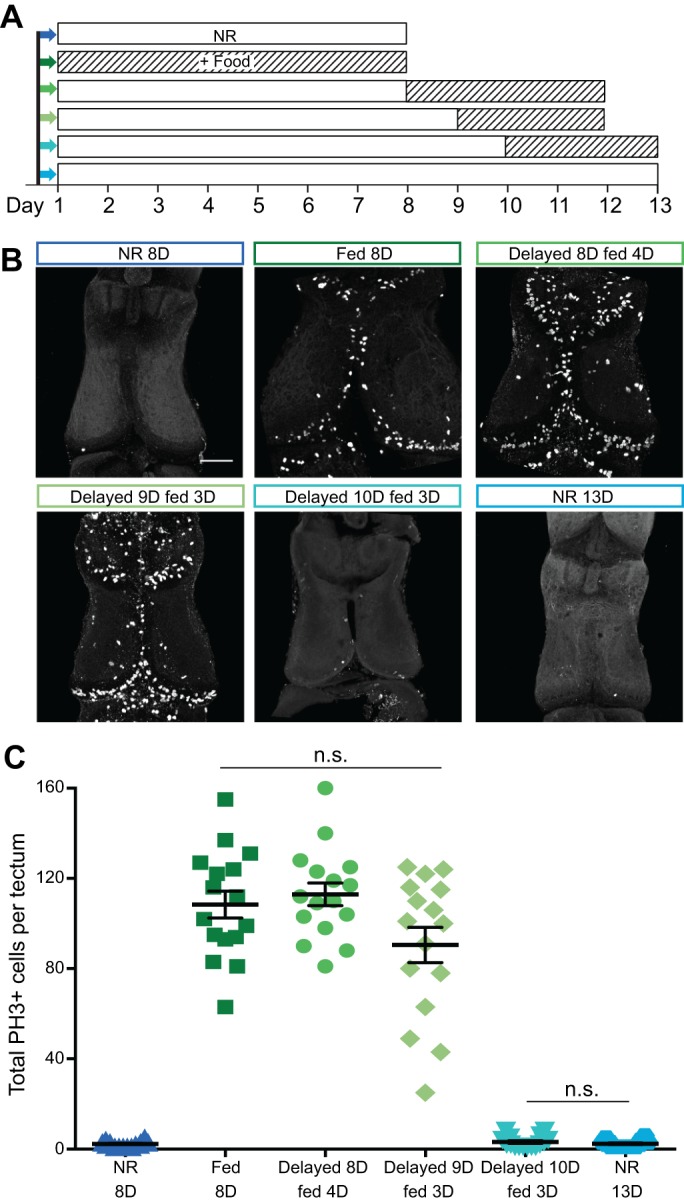Fig. 6.

Nutrient restriction causes reversible neurogenic stasis in X. laevis tadpoles. (A) Experimental schematic. Empty boxes indicate no additional feeding; striped boxes indicate supplemental food. Colors in A correspond to images in B and data in C. (B) Representative confocal z-projections of the optic tectum from groups defined in A. Brains are processed for PH3 whole-mount immunofluorescence to label proliferating cells. Scale bar, 100 µm. (C) Quantitation of proliferation in each group. Absolute values of PH3+ cells per tectum are shown, with bars indicating means±s.e.m. Without feeding, animals have very low levels of proliferation in the tectum (dark blue triangles in first column). Continuous access to food increases proliferation (dark green squares in second column). Unfed animals can recover normal proliferative levels upon feeding after 8 or 9 days (increasingly lighter greens, circles in third column and diamonds in fourth column). After 10 days without food (aqua inverted triangles in fifth column), proliferation levels are unrecoverable and identical to long-term unfed animals (light blue hexagons in last column). n=16 animals total from two independent clutches for each group. The only significant differences are between the blue and green groups (P<0.0001), with no significant differences within the green or blue groups.
